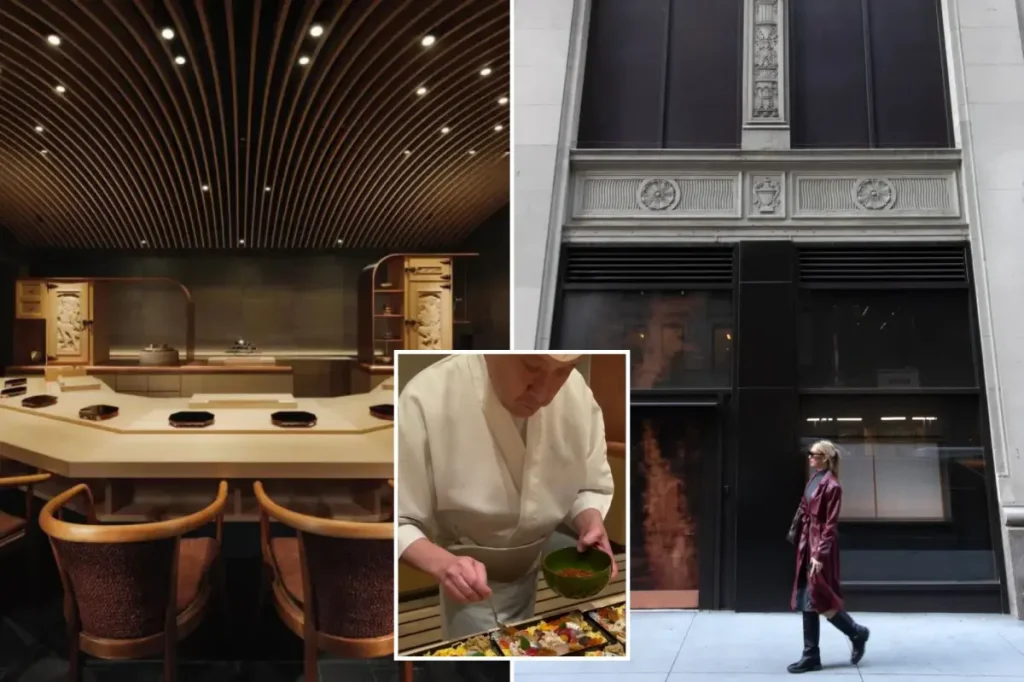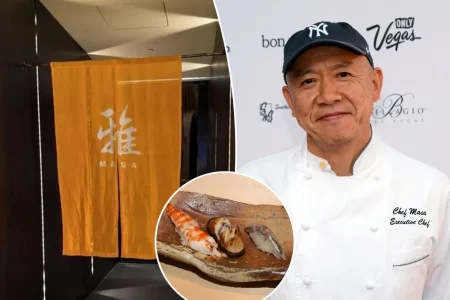The New York Sushi Scene’s Unexpected Power Shift
In a remarkable turn of events in New York City’s ultra-luxury sushi scene, Midtown newcomer Sushi Sho has achieved what few restaurants ever do: earning three Michelin stars in its debut on the prestigious guide. This stunning accomplishment has created waves throughout the culinary world, particularly as it coincided with the demotion of Masa, the long-reigning Columbus Circle institution that had maintained its three-star status since 2008. Located discretely near Bryant Park at 3 East 41st Street across from the New York Public Library, Sushi Sho opened with little fanfare last year but quickly became the talk of the town among serious sushi aficionados. The restaurant now stands as the only new three-star establishment added to the 2025 Michelin guide in the Northeast United States, cementing its position as the most prestigious sushi destination in New York—a city already famous for its exceptional Japanese cuisine.
What makes this shift in power particularly interesting is the value proposition between these two sushi temples. While both represent extraordinary investments for diners, Sushi Sho’s omakase experience starts at $450 per person before extras, drinks, and tax—meaning a couple can expect to spend upwards of $900 for dinner. This price point, astonishingly, represents a relative “value” compared to Masa, which charges a minimum of $750 per person before any additions. Both restaurants deliver transformative dining experiences, but Sushi Sho has managed to captivate the city’s most discerning palates with what many describe as a “borderline religious experience” at a comparatively more accessible price point. The intense enthusiasm from guests who’ve secured one of the coveted seats at Sushi Sho suggests that the restaurant’s meteoric rise is based on genuine, exceptional quality rather than mere hype or novelty.
Behind Sushi Sho’s remarkable success is Chef Keiji Nakazawa, widely considered one of Japan’s most dedicated and respected Edomae sushi masters. Nakazawa has built a reputation through his hard-to-book restaurants in Japan and Hawaii before bringing his artistry to New York. What distinguishes his approach is his devotion to traditional Edomae techniques—a 19th-century preservation-based method that involves curing, pickling, salting, and aging fish rather than serving it fresh from the ocean. This style, which Nakazawa helped revive after it fell out of fashion in Japan, represents a profound contrast to the “just killed” modern standard that has dominated high-end sushi establishments in recent years. His meticulous approach requires his team to begin work before dawn, carefully preparing rare seafood like mehikari (green-eye fish), gizzard shad, and monkfish liver through various traditional preservation methods, creating flavors and textures that simply cannot be replicated through modern shortcuts.
The dining experience at Sushi Sho is intentionally intimate, with just a handful of seats and only two seatings per evening. What truly sets it apart, according to enthusiasts, is the restaurant’s unique hybrid omakase-okonomi format. The first half of the meal follows a traditional chef’s-choice omakase structure, but the second half transitions to okonomi (à la carte), allowing diners to request specific items they particularly enjoyed or are curious about. This personalized approach creates a more interactive experience than the strictly choreographed progression found at most high-end sushi counters. Food blogger Seth Rudnitsky, who managed to secure a reservation, described his visit as transcendent: “No where outside of Japan is offering this much variety of such elite quality sushi. I had a borderline religious experience… I legitimately felt like a kid in a candy shop in Disneyland.” Another diner, Michael Ligier, echoed this sentiment, declaring it his “single favorite sushi experience” ever, praising Nakazawa’s masterful balance of tradition and innovation.
The implications of this shift extend beyond just these two restaurants. Masa’s demotion after 15 years at the pinnacle of American Japanese cuisine represents a significant moment in culinary history. When it first earned three stars, it was the first Japanese restaurant in the United States to achieve Michelin’s highest honor. Chef Masayoshi Takayama responded to the downgrade with grace, stating: “For 15 years, we’ve been honored to stand among extraordinary company, and I’m so grateful to our guests for their enduring trust, loyalty, and friendship.” He emphasized his pride in his team’s dedication and affirmed that they would “continue to strive for excellence.” The restaurant remains among the most revered in the country with its two-star rating, but the symbolic change in status signals evolving standards and preferences in the highest echelons of fine dining, particularly in how Japanese culinary traditions are interpreted and presented to American diners.
This unexpected reshuffling of New York’s sushi hierarchy demonstrates how even the most established culinary institutions can be challenged by newcomers who bring fresh perspective, deep tradition, and extraordinary skill. Sushi Sho’s achievement is especially remarkable considering how quietly it entered the scene—relying on word of mouth rather than splashy publicity campaigns. Its success represents a triumph of substance over style, of patient craftsmanship over flashy presentation. As diners increasingly seek authentic experiences and deeper connections to culinary traditions, Sushi Sho’s ascendance may signal a broader shift in how we value and evaluate restaurants. What’s clear is that New York’s position as a global epicenter of exceptional sushi has only been strengthened by this new arrival, giving diners one more extraordinary option for those special occasions when only the very best will do—and when price is truly no object in the pursuit of perfection.














